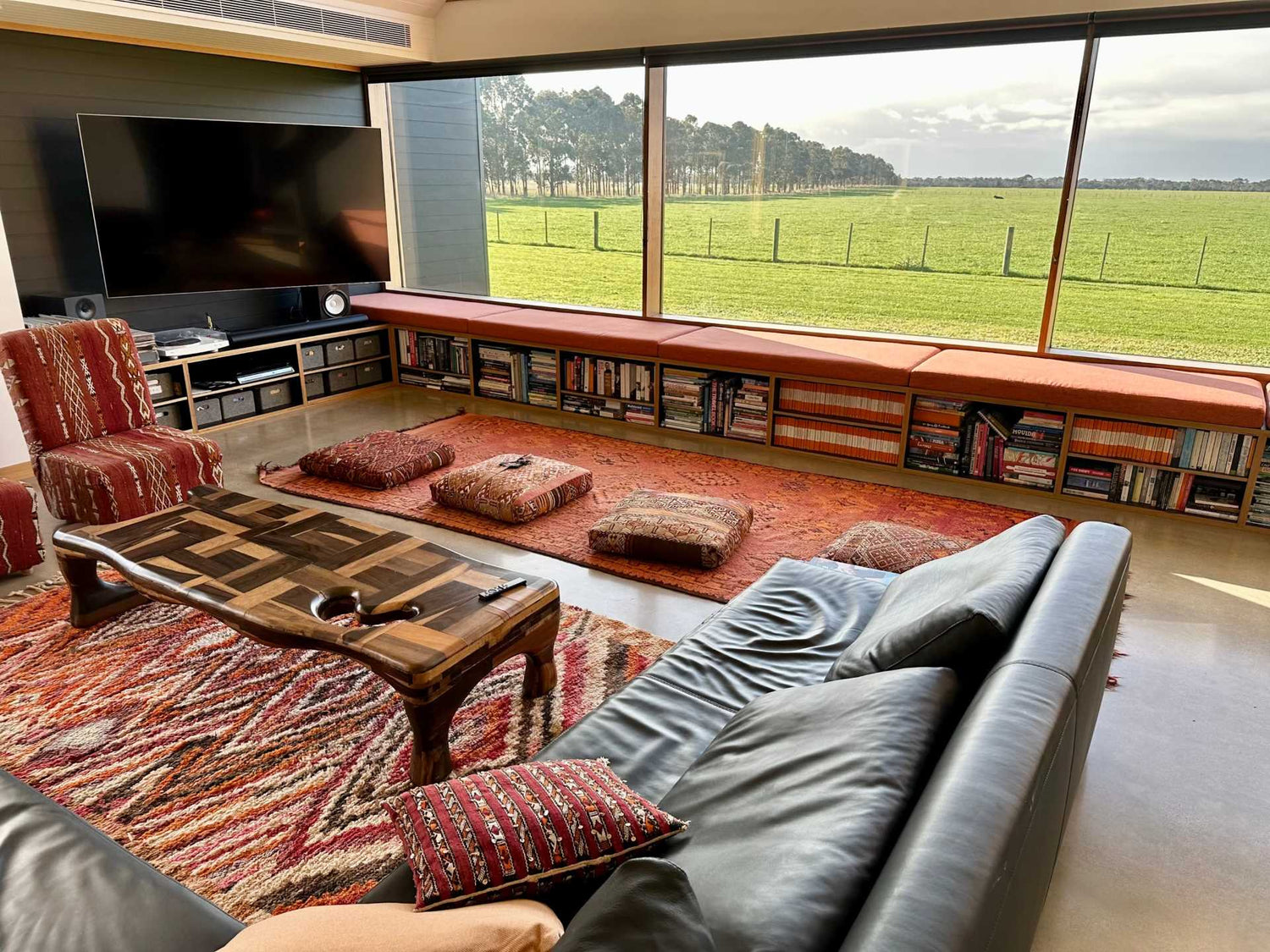7 Reasons Why Moroccan Rugs Are So Expensive
Several factors contribute to the overall cost of authentic Moroccan rugs. Firstly, they are crafted by skilled artisans (that we call artists) who use traditional weaving techniques passed down through generations for centuries that has developed their craftsmanship. The high cost can also be attributed to the natural fibres used, such as high quality wool, camel hair, silk and cotton.
So why are Moroccan rugs so expensive? Let's find out why the rug-making process in Morocco can have a high price tag.
1. The Time-Intensive Weaving Process
The handmade nature of a Moroccan rug and the traditional techniques developed over generations take time to complete. The entire process (coming from centuries of handmade craftsmanship) is done by hand from spinning and wool dyeing to the weaving and washing - there are skilled artisans behind every stage.
The rug making process starts when wool and other natural materials are collected from the local area and prepared for weaving.
Skilled artisans then use an ancient knotting technique such as double knot to literally weave Moroccan history into intricate patterns using bold colours for a unique piece.
Completed rugs are then trimmed, washed and dried in the sun with many Moroccan rugs taking anywhere from one to three months to be woven.

2. High-Quality Materials
The high price tag can also be attributed to the use of natural materials and natural fibres like wool and natural dyes sourced from local sheep and plants. The wool is processed and dyed by hand and in some areas plant-based dyes are preferred over synthetic dyes and can produce striking bold colours.
Other high quality materials typical to Moroccan rugs include cotton, camel hair and silk.
This combination of traditional methods and high quality materials makes Moroccan rugs soft underfoot and is one factor that makes Moroccan rugs expensive.

3. The Creative Value Behind Each Rug
A Moroccan rug is handcrafted to be a one of a kind unique piece of Art, imbued with personal creativity and cultural heritage. The weavers use intricate designs and their own style in each rug, creating their story from history passed down though generations.

4. The Role of Symbols and Patterns
All the symbols used in Moroccan rugs have meaning and these can vary according to regions and tribes. A generic symbol used in Morocco is the diamond. The diamond represents the hand of Fatima with each point being a finger and the middle section completing the hand. This is used for protection and to ward off the evil eye. Symbols such as this increase the rugs creative and historical value.

5. The Density of Knots and Its Impact on Price
The density of knots (measured in knots per square inch) influences the price and makes Moroccan rugs expensive. The more knots, the finer and more durable the rug, which takes more time and skill to produce. More knots and a tighter weave in a rug add warmth and make it soft underfoot, like those in our Beni Ourain collection.

6. Durability and Longevity of Moroccan Rugs
Authentic Moroccan rugs are highly durable, often lasting decades, which is why you can hang them on a wall and they will be fine. Because Moroccan rugs are durable this long lifespan justifies the high price tag, as a rug from Morocco is an investment, a unique piece that adds value and invites a woven history into your home.

7. The Global Demand for Authentic Moroccan Rugs
International demand for authentic, handcrafted Moroccan rugs has surged. Only limited quantities of rugs can be handmade by weavers in Morocco; this makes Moroccan rugs so expensive as they become rarer and harder to obtain in a world of mass-produced alternatives.
So when you go to purchase your Moroccan rug, make an informed decision, taking into consideration the limited quantities that reflect the cost and value a Moroccan rug will bring to your home.



